YARDLEY, PA – The Delaware River Joint Toll Bridge Commission today announced the establishment of a webpage for a 2024 rehabilitation project at the agency’s New Hope-Lambertville Toll-Supported Bridge.
The newly established webpage may be accessed in the projects section of the Commission’s public website www.drjtbc.org. The page’s direct address is: www.drjtbc.org/project/newhopelambertville
At this time, the webpage has limited information because design work for the project is still in its earliest stages. Content is expected to be expanded and updated as project planning advances in coming months.
Currently, the page provides an overview along with the project goals, current schedule, and anticipated tasks to be performed once rehabilitation work begins at the bridge. The page has additional information on the bridge, some video links, and a bibliography of published content mentioning the bridge (note: some errors exist in these publications).
The bridge’s last rehabilitation occurred in 2004. Because of the extent of work performed during that project, the Commission anticipates the duration and number of tasks in the bridge’s upcoming rehabilitation will be less extensive.
The Commission has stated that the bridge’s walkway will need to be closed for a yet-to-be-determined period to allow for replacement of the walkway’s surface panels with an improved product. Vehicular travel at the bridge also is expected to be affected in some yet-to-be-determined manner. More specifics on travel impacts won’t be determined until preliminary design work progresses through spring 2023. The Commission wants to begin project work in early 2024 so as not to interfere with business and events during the winter holidays in the host communities’ commercial centers.
The rehabilitation project is expected to have four major tasks:
- Repair various pieces of the bridge’s steel superstructure;
- Clean and repaint the bridge’s steel superstructure and underlying bearings;
- Replace the current fiberglass walkway panels with an improved system of quieter, slip-resistant fiber-reinforced-polymer panels; and
- Install a programmable LED lighting system to highlight the bridge’s architectural profile at night. This would be the first time the bridge has ever been outfitted with such a lighting system.
The Commission last month announced the procurement of an engineering consulting firm – GPI/Greenman Pederson, Inc. of Lebanon, N.J. – to design the project so that can it be put out to bid for a contractor later this year. A significant design objective for GPI will entail sequencing project tasks to mitigate the range of travel impacts needed to carry out project construction in 2024.
An initial task for GPI is performing a detailed bridge inspection. This work will confirm and assess the breadth of structural deficiencies to be addressed under the rehabilitation project. (Note: Routine weekday off-peak alternating single-lane travel restrictions will be needed to carry out some inspection work, but motorists are not expected to be significantly impacted) The bridge’s walkway also could be closed or restricted for brief periods for the inspections.)
After the bridge inspection process, design engineers will map the course of action to address identified issues with the bridge and plan out the other major tasks that the Commission has budgeted to be conducted during the project. GPI will develop drawings, list structural details, compile construction specifications and map traffic-control plans, sequencing the project’s tasks in a manner that mitigates impacts to motorists, pedestrians, and the bridge’s two host communities.
During the latter part of the design process, GPI is expected to hold two open house sessions (one in New Hope and one in Lambertville) to inform the public about the project’s purpose, identify substructure and superstructure conditions that need rehabilitation or repair, show bridge architectural lighting renderings, explain any travel restrictions that might be needed to carry out the project’s construction stages, and summarize the project’s anticipated work schedule. The public would be encouraged to ask questions and provide comment at those sessions.
The aging bridge superstructure has a four-ton weight limit, a 10-foot height restriction, and a 15 MPH speed limit. It carried an average of 12,400 vehicles per day in 2022.
